Has your baby started toddling? Well, you really need to select shoes for the toddler. When doing so, you should be aware of this information about traditional foot-wearing VS minimalist and barefoot alike shoes. For instance, Tracy Byrne, a podiatrist Specialising in Biomechanics and Podo-Paediatrics (the study of infant’s feet and their development), recommends choosing minimalist shoes for kids. Your child’s footwear more attention than yours, for a child’s bones, are developing at a faster pace and need special care. It is recommended to get your child’s feet measured every three months so the shoe can adjust properly.
Breaking shoe myths
Many rationalize support in normal or maximal shoes by saying that when a child has started walking he needs support. Thus, thick soles will provide him adequate support. That approach to choosing shoes for the child seems to be misleading, as much scientific research shows us today. A child’s feet comprise mostly cartilage and to develop into an adult foot; it needs to develop of 26 bones. The period when this development occurs is of great importance. Dr. Jane Andersen, a podiatrist and former president of the American Association for Women Podiatrists, suggests that “After they walk, you want them either barefoot or in the most flexible shoe possible so their muscles can develop properly, Flexibility is the most important issue as they are developing their arch.”

The bones in the feet are developing, andthey do not harden until the age of fivn. These soft bones tend to be developed wherever shoes mold them. Though it is good to remain barefoot in the house, yet, a child, when starts are toddling out, may need some protection to stay safe from the world, due to challenging surfaces as cities’ low hygiene streets, cold weather or outdoor sharp rocks terrines. Shoes shall be of a flexible nature which can bend at the half and twist too.
A solution – Minimalist shoes for kids or Barefoot shoes for kids
Using minimalist and barefoot alike shoes which offer a great foot-bed, and a durable sole is an excellent way to tackle these issues. Wearing these kinds of barefoot shoes for kids encourages fore-foot or mid-foot landing rather than heel striking. An early walker, when used minimalist shoes for kids, increases the chances of strengthening intrinsic muscles and ligaments of the foot. The muscles of the foot, ankle, and lower legs stand activated. Normal, maximal, and heavy sole shoes can make it difficult for the child to learn to walk, let alone walk.
For a child who just learned to stand straight with his mother’s leg, it is impossible to carry the weight of the heavy-sole shoe. If you want your child to start walking, you need him to feel more comfortable and barefoot, even where he is wearing shoes. Minimalist shoes for kids or Barefoot shoes for kids are the best solution for that conundrum. Lightweight, flexible and soft baby minimalist shoes tend to allow your child to extend his toes and walk as if he is barefoot. A child, while wearing minimalist shoes, improves his weight balance. Baby Minimalist shoes allow more space for your child’s foot to grow. That is usually the need of the hour considering the above-mentioned fast-paced development of the foot.
Podiatrist recommendation on how to choose baby minimalist shoes
The Australian Podiatrist Association recommends the following tips when choosing fitting footwear:
- Always have both feet measured for length and width.
- The shoes should be soft shoes.
- The shoe should fit the natural shape of the foot, especially around the toes.
- The toe of the shoe should allow toes to move freely and not be squashed from the top or the sides. Make sure there is about 1cm growing room for children between the end of the longest toe and the end of the shoe.
- Shoes should fit comfortably around the heel and not be too loose or too tight.
- Having shoes fitted by a store that offers trained assistants can help ensure the correct.
- size and shape to keep little feet running and jumping.
The idea of making a child run barefoot is not much praised by most parents. And true, you need to be caution from some risks that can harm the infant’s feet. While it is encouraged to each parent and individual to assess the surface and decide if the risk is out there, I would also mention that in my own opinion, the reality is that the risk is not that big, as it is our fear that makes it look that way. And why being too worried when positive benefits of being barefoot for kids are more than going stuck in normal sturdy shoes? It gives a more natural running style to a kid along with the development of feet muscles.
There are many companies that manufacture minimalist shoes for kids. For instance, the Vibram’s launch of FiveFinger shoe is aiming their shoes to feel as if running barefoot. They make their structure only to cover feet from dirt and concrete. A mere foot cover with twisting and much elasticity, we consider these kind of baby minimalist shoes recommended for kids.
Going Barefoot

Well, if you have been reading thoroughly, I did not mean to run your kid barefoot along sharp rocks, glass, and dirty concrete unless he is performing in an action movie. Barefoot style running has provoked much-ignored debate among parents. Another benefit of running barefoot for kids. Well, a barefoot running kid can partially fly later in his life. No, I am not joking. While running barefoot, there is less pressure on the heel and toe. Barefoot style running will not give your child ‘flat feet’. So, his arch-feet high from the ground means he is flying, and his feet are in good health due to the barefoot-style running.
Going barefoot is good but in dangerous terrain, it can harm the feet. As mentioned above, barefoot-style shoes like Vibram 5F, Vivobarefoot, Xeroshoes and many more, have thin yet strong soles, great elasticity, and natural style. Wear shoes but keep them minimal.
Feet, The Foundations
A topsy-turvy foundation cannot build a strong building; you know that well. The foot is the foundation of the body. Doctors state that wearing wrong-sized shoes at an early age is responsible for problems and pains in adulthood. We will describe to you some of the effects of good vs. bad shoes on children.
Say No to Fashionable Shoes, Yes to minimalist shoes for kids or Barefoot shoes for kids

It is tempting to buy shoes that are in fashion. Do not buy them because the reality of voguish shoes can be different. The American Association of Pediatrics (AAP) maintains that an average child doesn’t need shoes with “wedges, inserts, high backs, reinforced heels, special arches, and other features designed to shape and support the feet.” A child’s feet develop naturally. All, you, being a parent, have to do is allow some space along with simplicity to your child’s shoe. So there’s no need to sacrifice that important comfort for your little kid in exchange for something more structured and voguish. We will highlight some more problems. The tight, pointed shoes can cause corns, bunions, toe hammer, claw toes, and ingrown toenails correcting that may require surgery. The simplest solution is to provide flexible shoes.
Yes To Comfort
Comfort matters a lot in case of your children’s footwear; then it’s cost, fittings, and fashion, etc. One of the functions of shoes is to give us comfort. Comfort means the shoes have space to allow feet to move freely inside. As for recommending a child, the spacious shoes matter a lot like the kid’s feet will grow at a faster pace. Therefore minimalist shoes for kids can support that very well.
Dr. Stewart Morrison stated the findings as worrying, as children’s feet are more prone to damage than adult’s feet. He said; “It’s really vital to ensure they are wearing shoes which fit them well – in width as well as length – and that are suitable for the age, as well as the task they are wearing them for.”
Strained Foot
Choosing the wrong kind of shoe for your children can provoke a problem in the foot. The traditional or stiff-sole shoe is likely to generate pain and discomfort in lower limbs. Maximal and heavy shoes are sure to immobilize the feet, and It is never natural to strain the 19 tendons and muscles, 26 bones, 107 ligaments, and 33 joints that collaborate to mobilize us. Let the feet grow in a way they are meant to. Do not strain them by wearing normal or maximal shoes.
Arch Support
Trying cute, heavy-soled, inflexible, molded, arch-supported, maximal, and sturdy new shoes in your child’s feet are usually not good. Arch support is necessary only when the child or any person has an orthopedic problem and was recommended one by a relevant physician. Most healthy young people don’t need such a thing. And even when diagnosed, needs to think well before stepping into such feet’ boxes, as this story can show different. Though arch in a child’s feet does not develop until puberty, yet there is a fat-pad for support. It looks like flat feet, but it is not. Fat is giving cover until the arch develops. Most traditional shoes making companies miss the arch support. Minimalist shoes for kids or Kids barefoot shoes tend not to interfere with the natural arch for they allow the free movement and do not strain the arch development by stiff sole.

Mechanics of Gait
Another research shows that sturdy and traditional footwear can strangle the functions of feet. It was further found that short and long-term use of stiff-soled footwear affects the kinematics and kinetics of gait. For a child who has a life ahead, your choices today shall not become a liability tomorrow.
Athletic Powers

All parents dream that their newborn baby can be the athlete. It is important to choose wisely the shoes that the to-be athlete is going to wear. Research has shown some new benefits of running barefoot for kids and with shoes. Professor Astrid Zech, from the University of Jena, Germany, accompanied by two research teams assessed three motor skills – balance, standing long jump and a-20 m sprint – in 810 children and adolescents from 22 primary and secondary schools across rural Western Cape South Africa and urban areas of northern Germany. These two groups were representing two altogether different footwear lifestyles: children from South Africa are habitually barefoot, while children from Germany wear shoes most of the time. The children who were barefoot given a new approach to changing trends through results.
They were better than shoe-boys in jumping and balancing themselves. Well, to enhance the athlete skills of your children, you can allow them to wander barefoot. Right? Yet the minimalist and barefoot alike shoes make your child feel like he is not wearing shoes and yet give him protection from the dirty concreted world.
Final Words about minimalist shoes for kids VS traditional shoes
Here are a few guidelines on how to choose footwear for your children. It is not most important to ensure the design, but the health of your child is foremost. We have tried to outline some effects of choosing bad footwear for you to understand and give preference to barefoot and after that minimal and barefoot alike shoes. The intention is to provide a look into the importance of footwear, which can lead to new insights whenever you shop for your kid.
If you are interested in checking some minimal shoes for your child or your family, we have been gathered all existing minimal shoe brands on one page. check out the minimal brands’ complete directory.
Other Reference:
- http://sportsci.org/jour/0103/mw.htm
- https://www.drgangemi.com/kids-health/childs-shoe/
- https://www.theguardian.com/lifeandstyle/2010/aug/09/barefoot-best-for-children
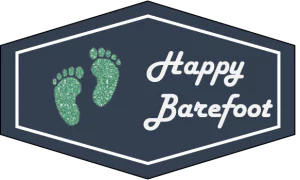




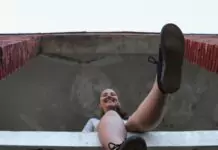
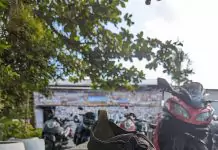
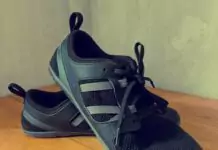

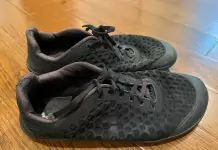

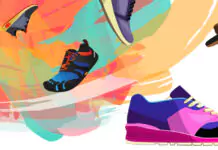
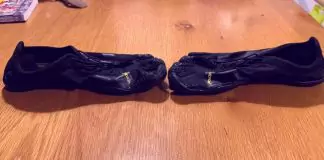








[…] While from a functional perspective, wearing shoes is not really required for children, you cannot ignore the need for shoes based on the environment that a child is in. Urban environments are full of unnatural dangers such as dirt, animal waste, and possible hazards like glass, hence it is essential for children to wear shoes to attain protection against these dangers. The middle ground for this dilemma can be reached by finding some information on barefoot shoes for children. […]
[…] While from a functional perspective, wearing shoes is not really required for children, you cannot ignore the need for shoes based on the environment that a child is in. Urban environments are full of unnatural dangers such as dirt, animal waste, and possible hazards like glass, hence it is essential for children to wear shoes to attain protection against these dangers. The middle ground for this dilemma can be reached by finding some information on barefoot shoes for children. […]
[…] to experience movement with freedom in the great outdoors. The brand is also creating freeing, minimalist footwear for little adventurers, like the Vivobarefoot Ultra Bloom for […]